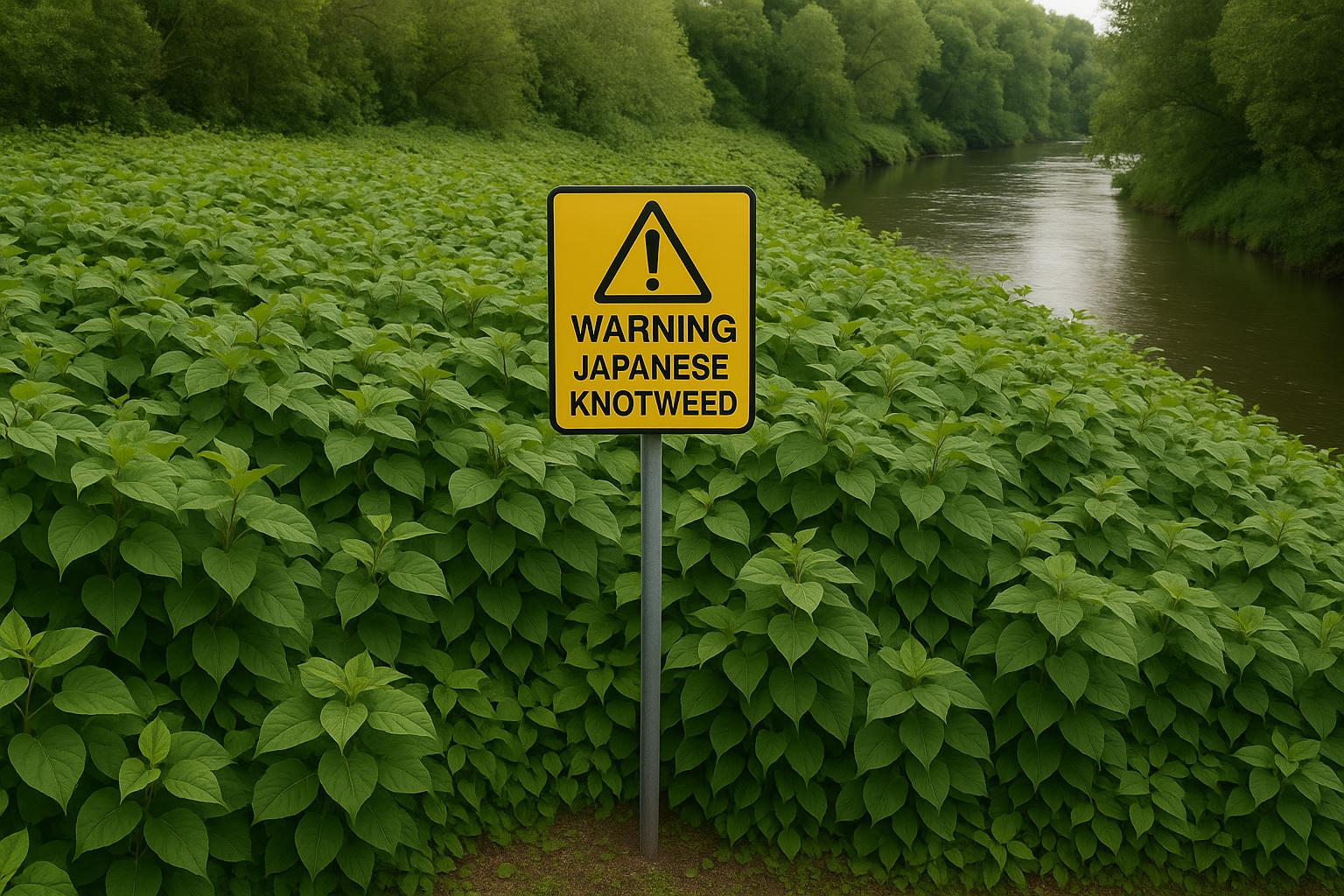A vast three-mile expanse of Japanese knotweed, arguably the largest in Britain, has engulfed the banks of the River Roding in Barking, East London, prompting serious concern from environmentalists and local residents alike. The invasive plant, known for its aggressive and destructive growth, has overtaken acres of native reed beds and scrubland, posing not only an ecological threat but also a looming risk to property values nearby.
Volunteers from the River Roding Trust and the charity Protect Earth have been battling the infestation, which has been spreading unchecked for years. Paul Powlesland, a river guardian and barrister at Lawyers for Nature, explained that the knotweed is now dominating an entire riverbank area that should be rich in biodiverse reed beds and native plants. He warned that if the weed continues unchecked, it could render nearby homes unmortgageable, with eradication costs soaring into the millions. The plant’s root-like rhizomes can extend up to seven metres and penetrate through concrete and walls, impacting close to a million homes across the UK.
The invasive knotweed is particularly challenging to eliminate. Volunteers are relying on glyphosate-based herbicides, applied during a narrow "spraying window" between flowering and the first frost to maximise effectiveness. Phil Sturgeon from Protect Earth indicated that time is running out with only a couple of weeks left for this season’s optimal treatment window. Despite glyphosate’s controversial status, it remains the most effective method for killing the plant’s extensive root system.
Ecologically, the knotweed's dominance spells disaster. The river’s tidal reed beds are vital carbon absorbers and natural sewage filters, and they support diverse wildlife including birds and insects. However, as the knotweed spreads, it creates a "dead space" that supports little to no biodiversity, effectively replacing vibrant natural habitats with an invasive monoculture. According to experts, this not only threatens flora and fauna but also poses a threat to the surrounding infrastructure, including railways and roadways owned by bodies such as Transport for London and Network Rail.
Local residents remain largely unaware of the threat on their doorstep. Many expressed shock upon learning of the knotweed infestation, describing it as "terrifying" and worrying about the long-term impacts on their properties and their quality of life. The weed is already present on railway tracks nearby, and there is widespread concern about the potential for further damage to infrastructure and homes.
Government agencies have been criticised for a lack of decisive action. Paul Powlesland urged the government to implement a comprehensive plan to map, contain, and eradicate Japanese knotweed across the country, warning that failure to act now will lead to exponentially higher costs in the future. With current efforts reliant primarily on voluntary groups and local charities, there is a broad call for coordinated intervention.
Experts, including Emily Grant from Environet, highlight the difficulty and cost of treating extensive knotweed infestations, estimating hundreds of thousands of pounds may be needed for full remediation of the River Roding site. The invasion illustrates the broader challenges posed by Japanese knotweed, first introduced to the UK as an ornamental plant in the 19th century, which has since become one of the UK's most aggressive invasive species, capable of severely damaging properties and ecosystems alike.
Transport for London stated they are aware of the knotweed on their land by the River Roding and have begun control measures, while Network Rail is open to investigating specific issues if identified. DEFRA and the Environment Agency have yet to provide public comment, as the community awaits further action.
The Japanese knotweed crisis along the River Roding is a stark reminder of the ecological and economic dangers posed by invasive species and the urgent need for coordinated, well-funded management strategies to protect both natural habitats and local communities.
📌 Reference Map:
- Paragraph 1 – [1], [2], [4], [6]
- Paragraph 2 – [1], [4], [5]
- Paragraph 3 – [1]
- Paragraph 4 – [1], [3], [5]
- Paragraph 5 – [1], [4]
- Paragraph 6 – [1]
- Paragraph 7 – [1], [5]
- Paragraph 8 – [1], [4]
- Paragraph 9 – [1], [5], [3]
- Paragraph 10 – [1]
Source: Noah Wire Services
